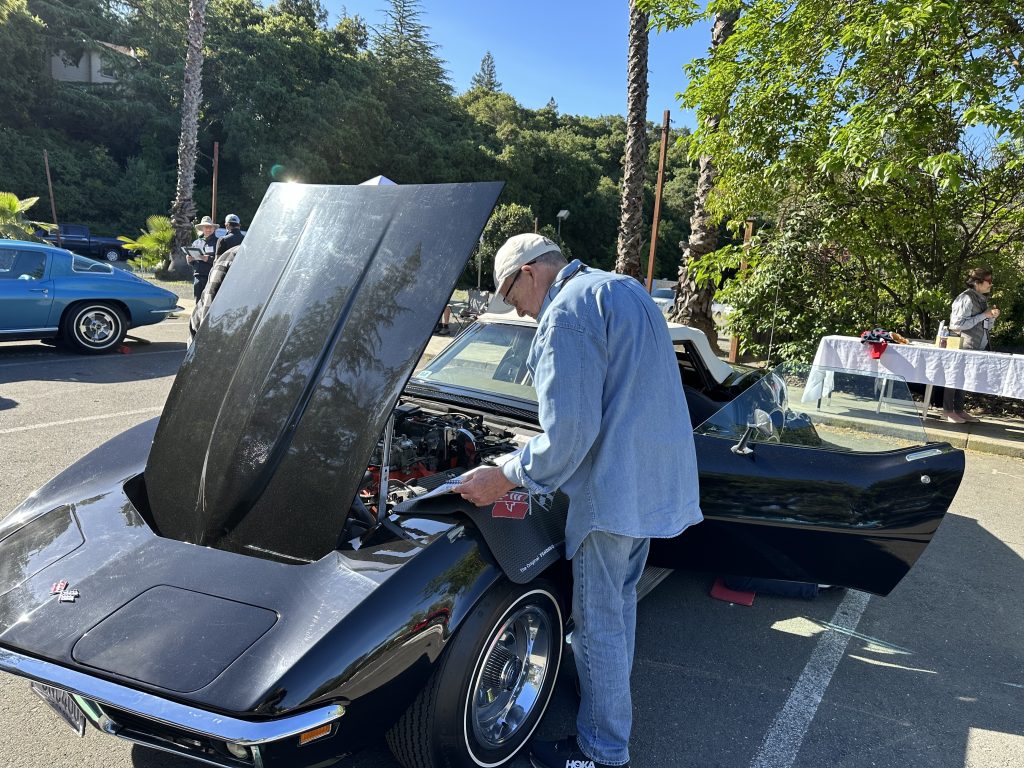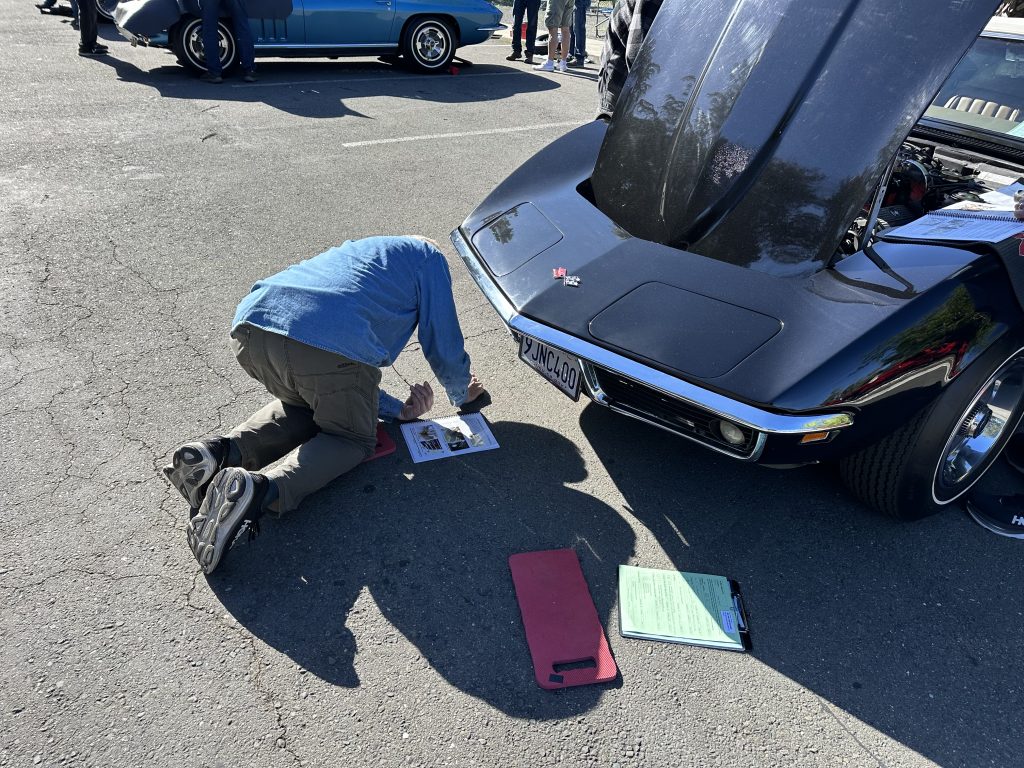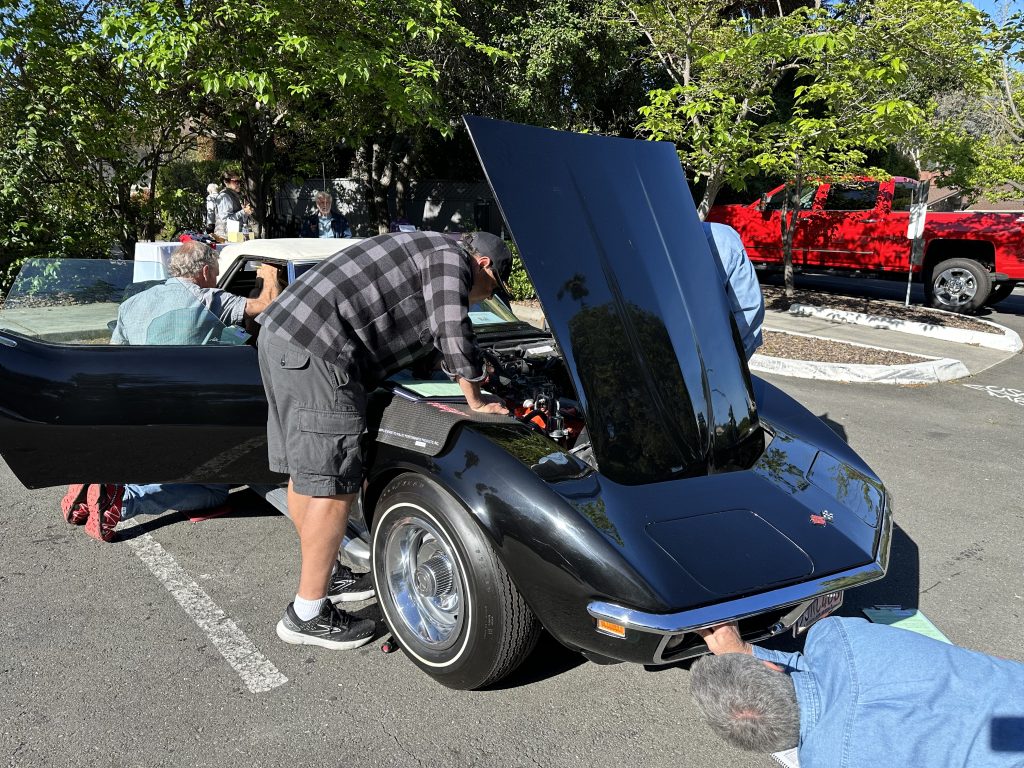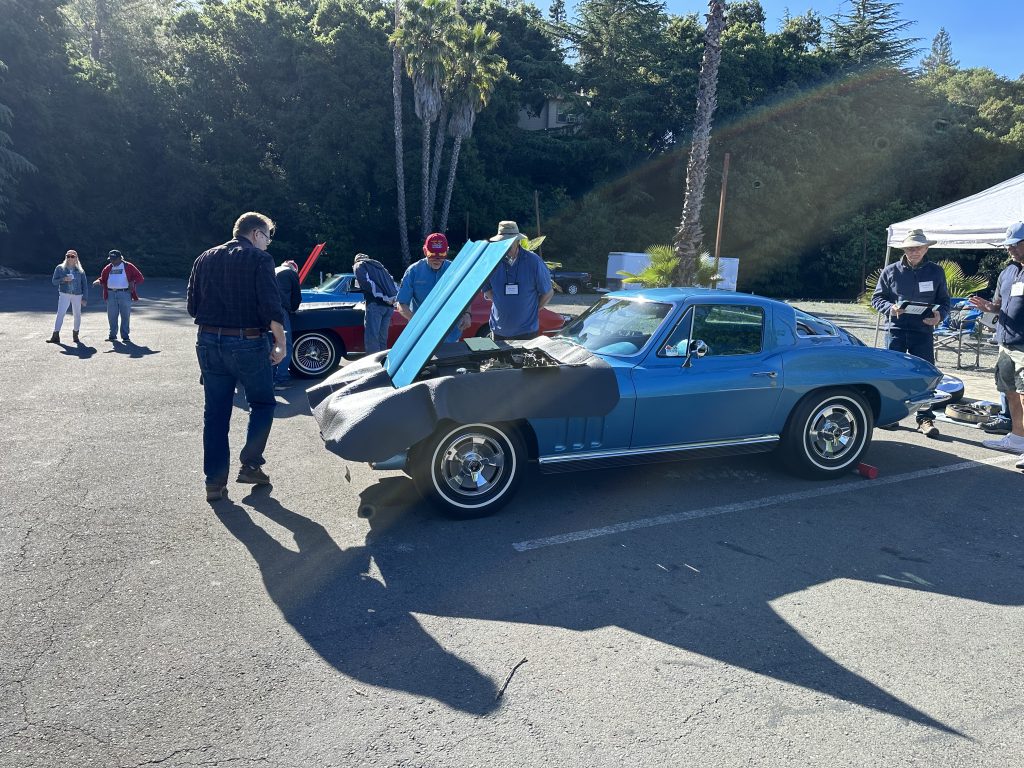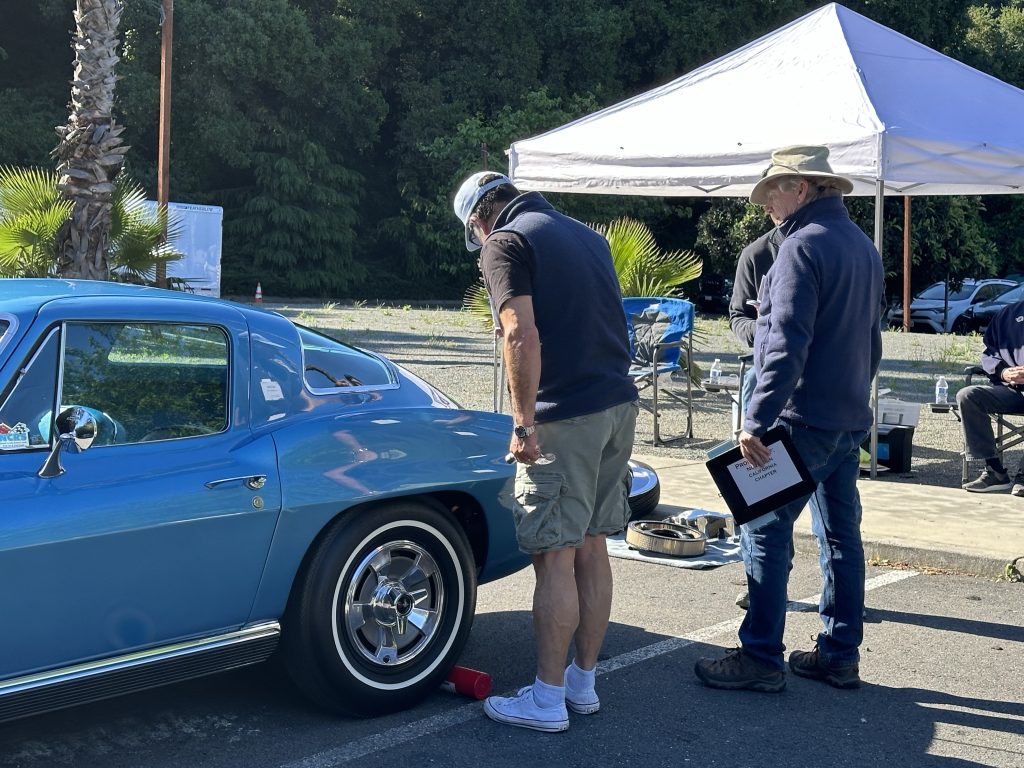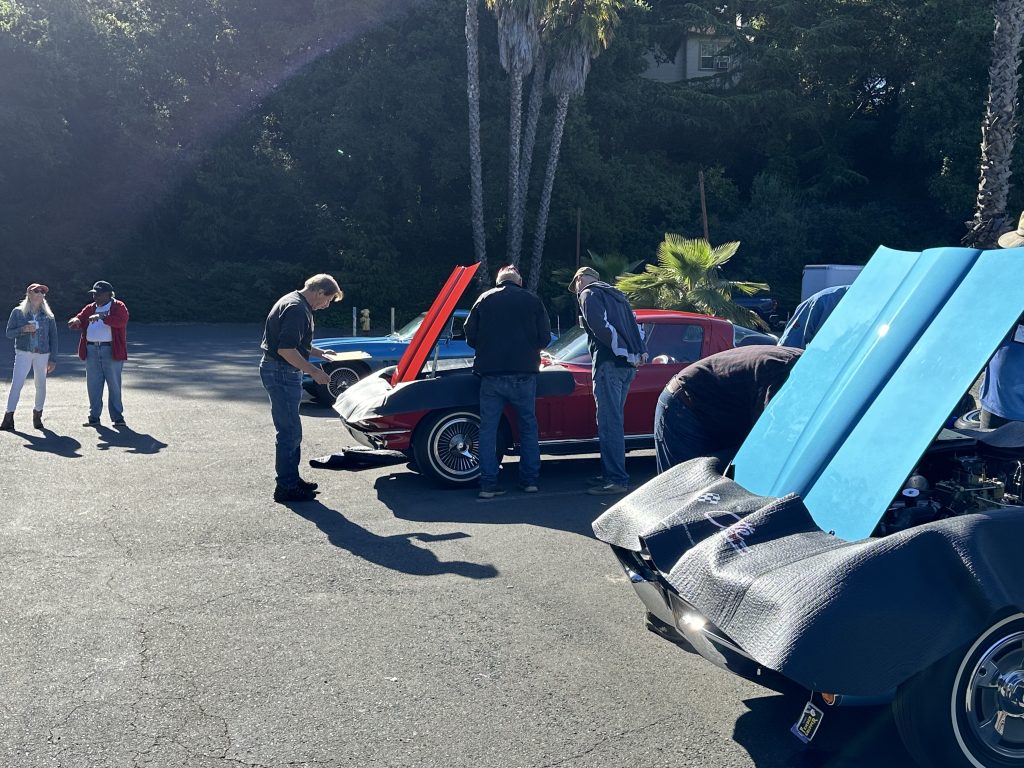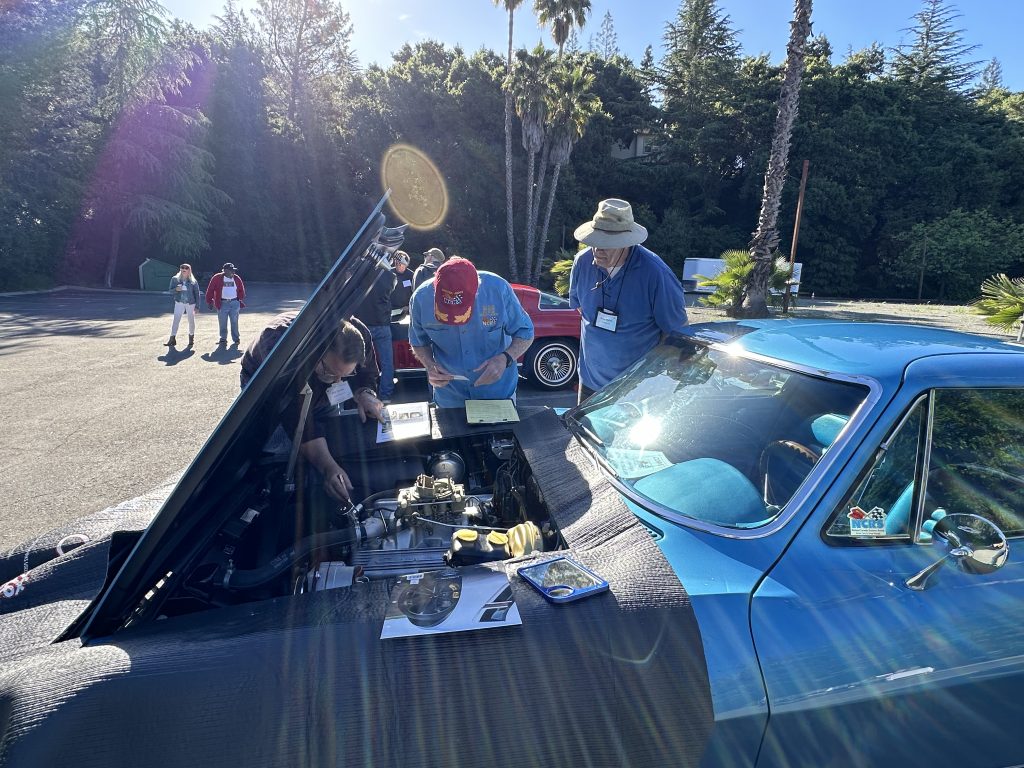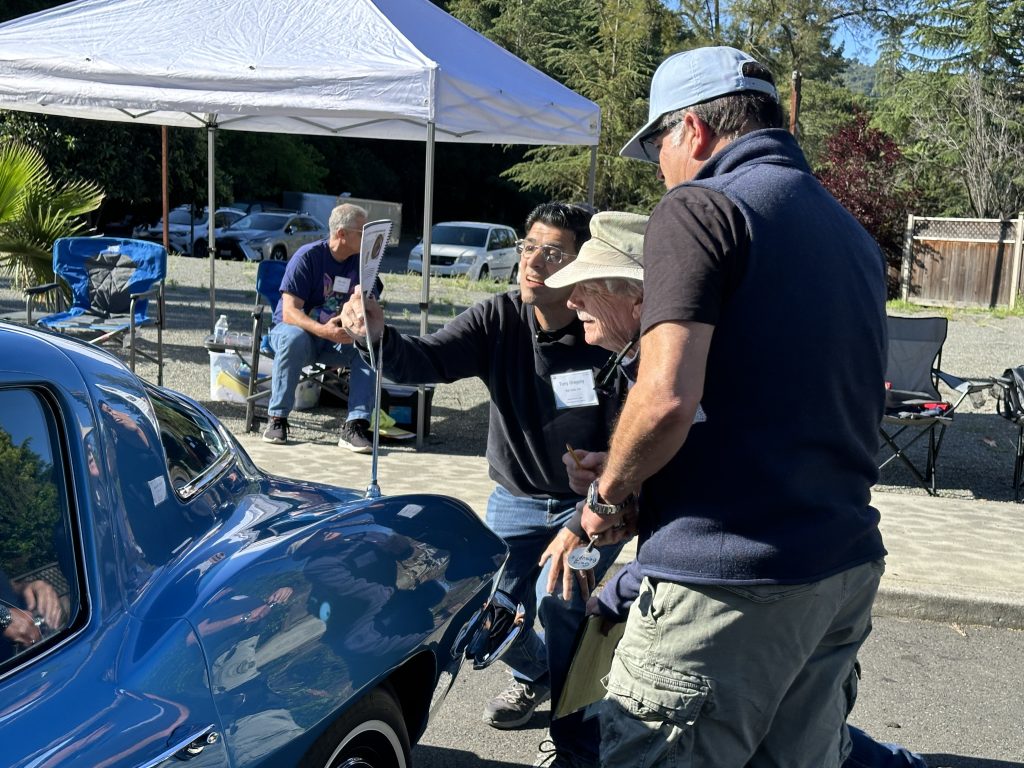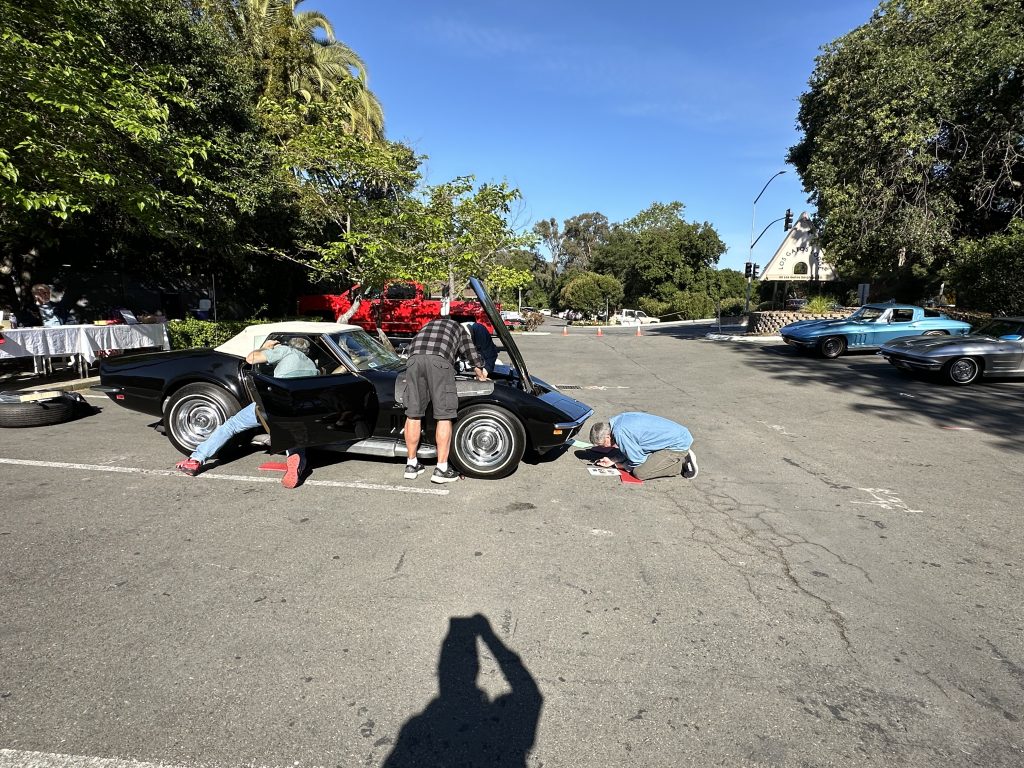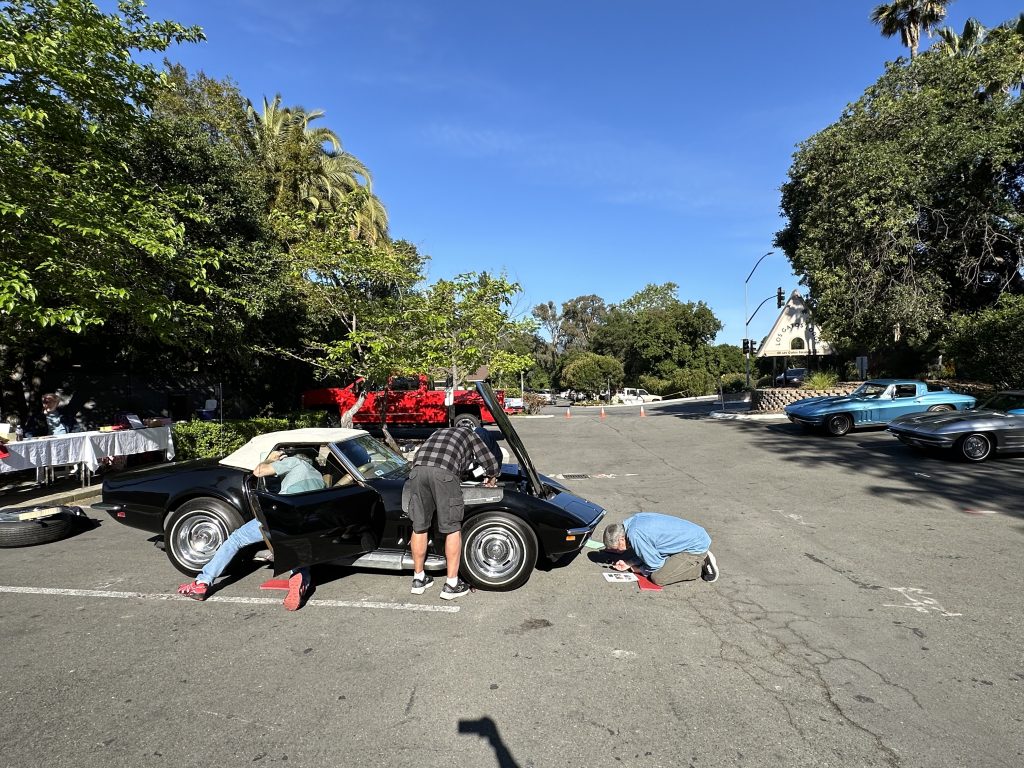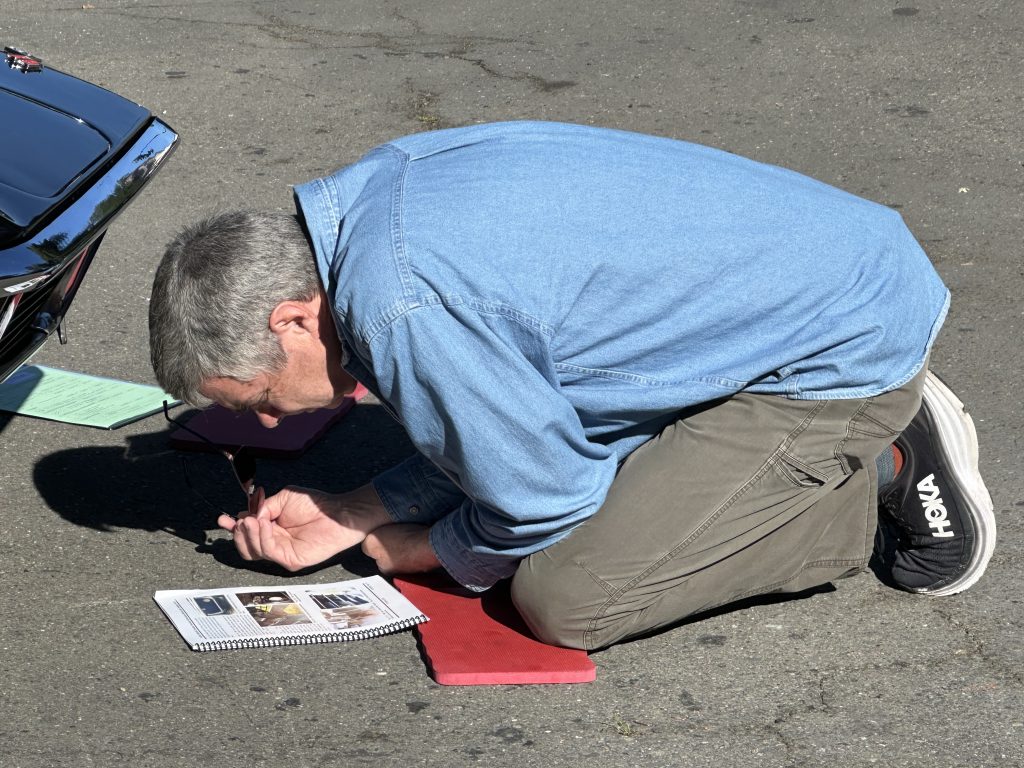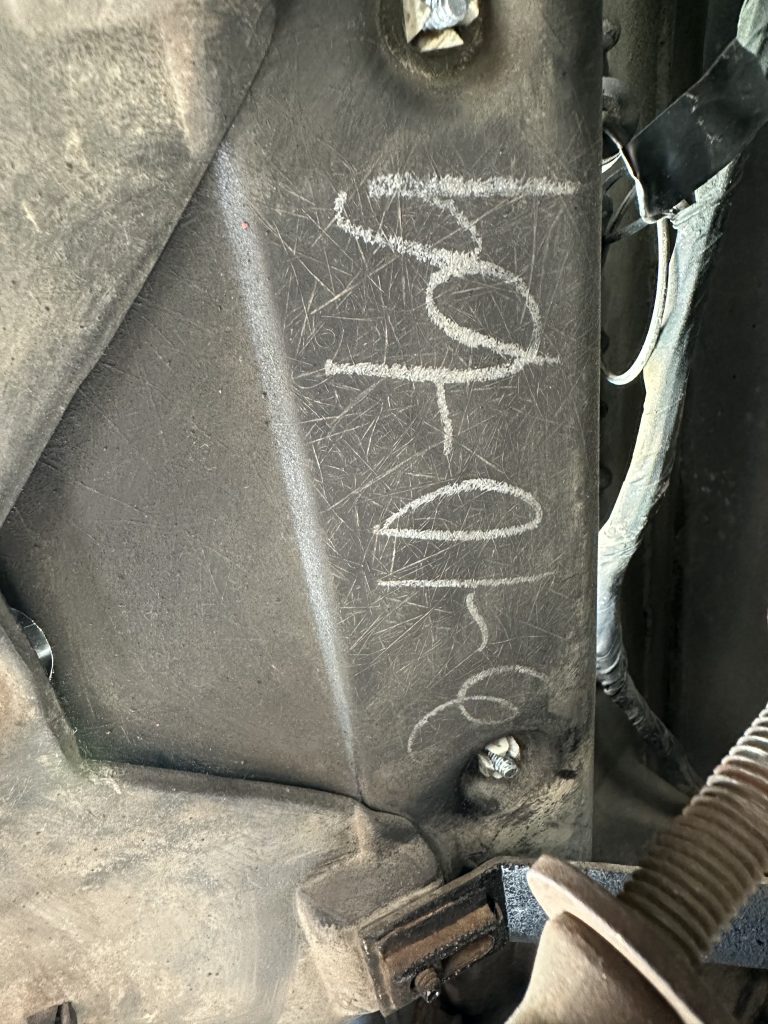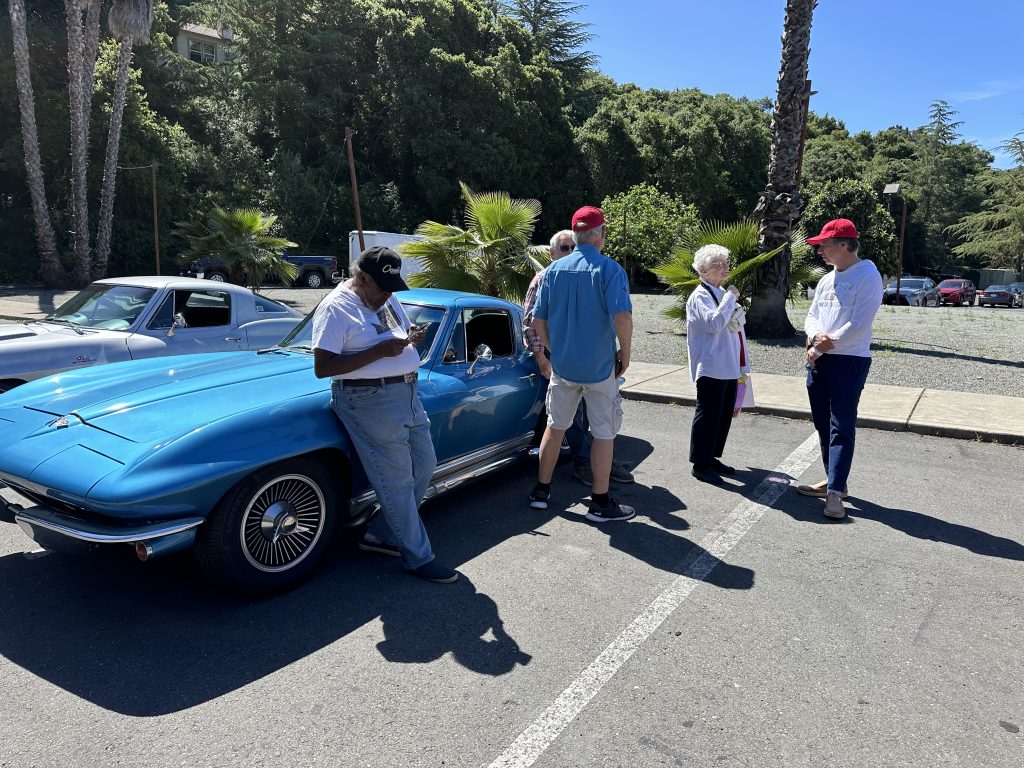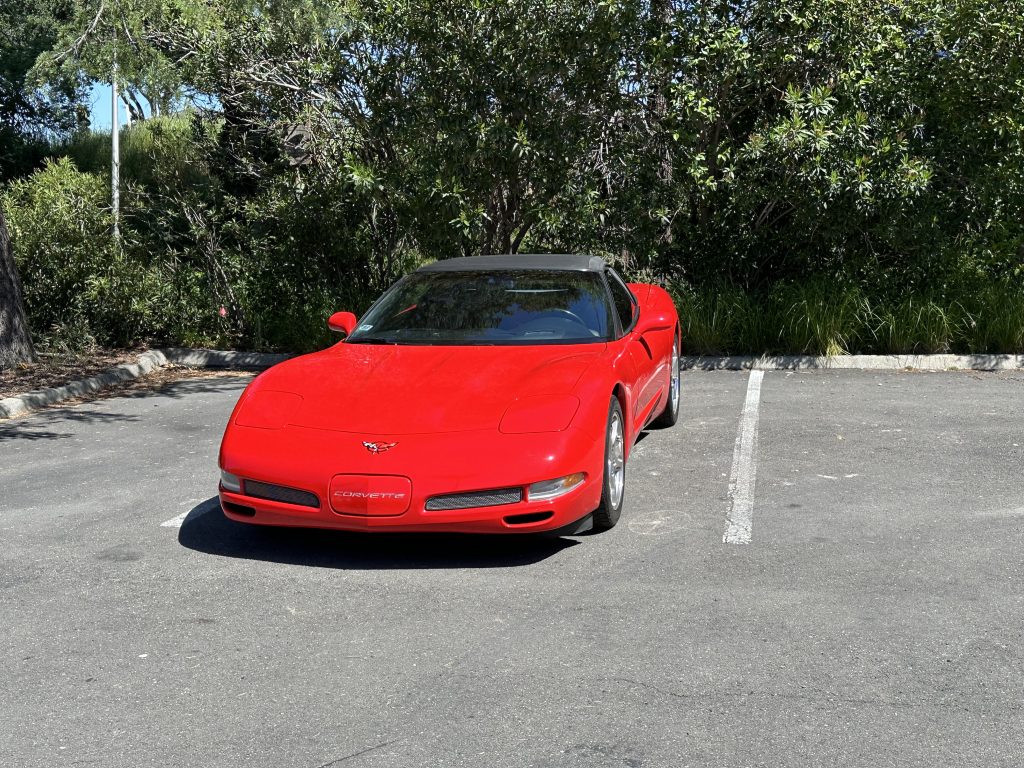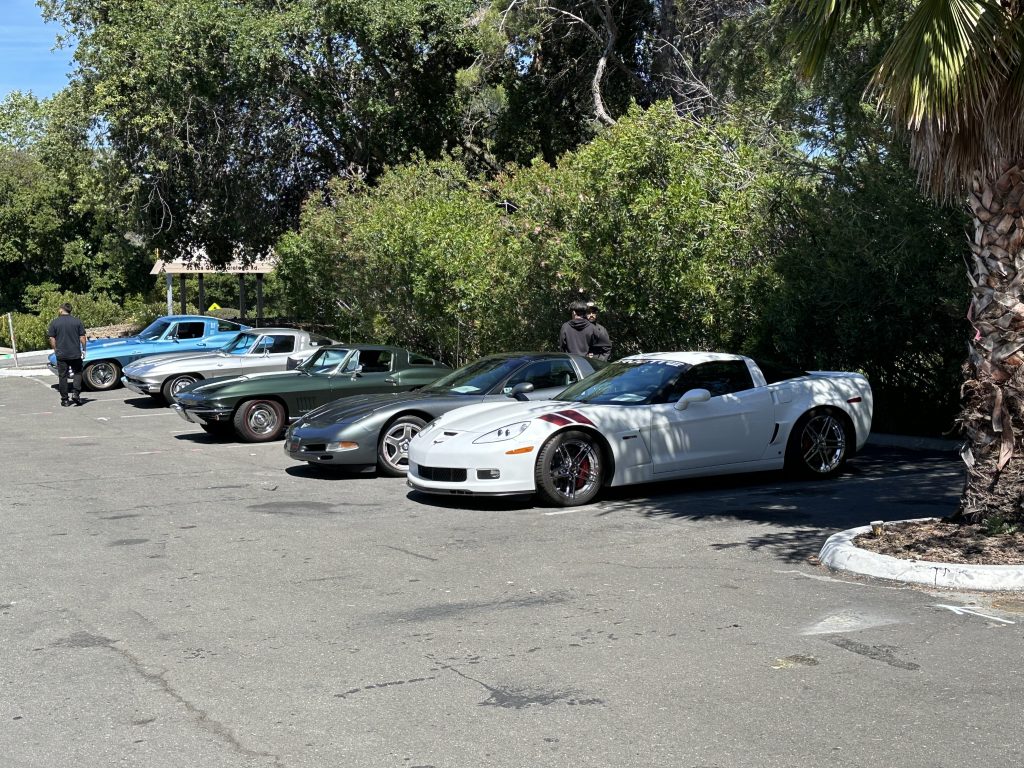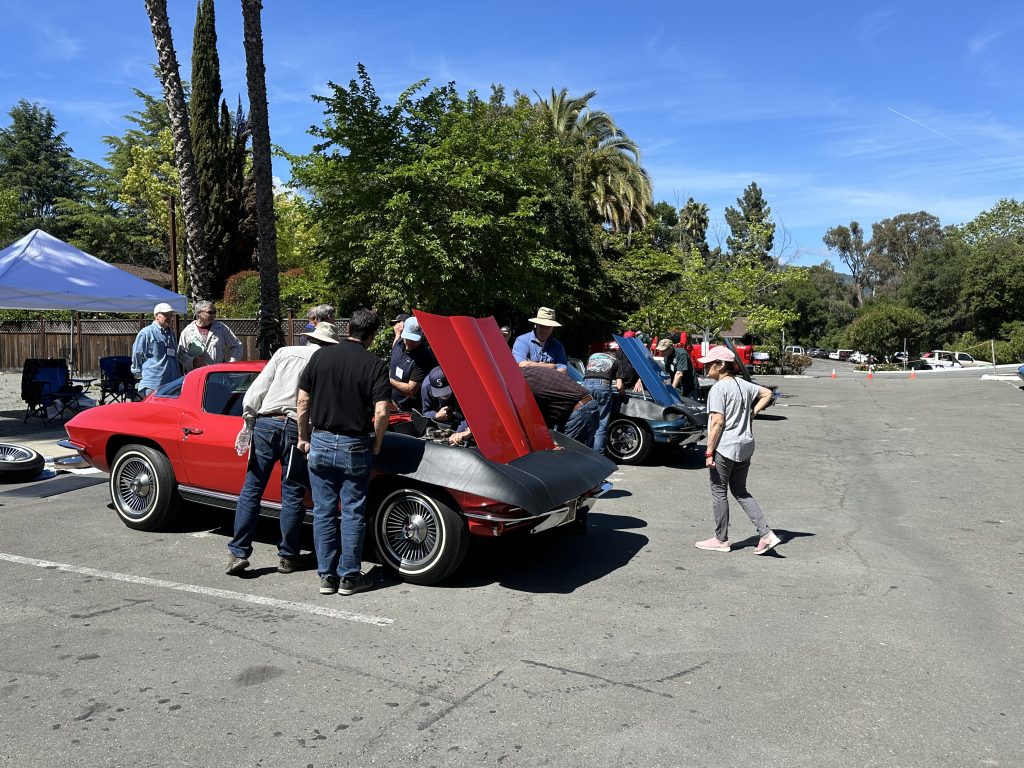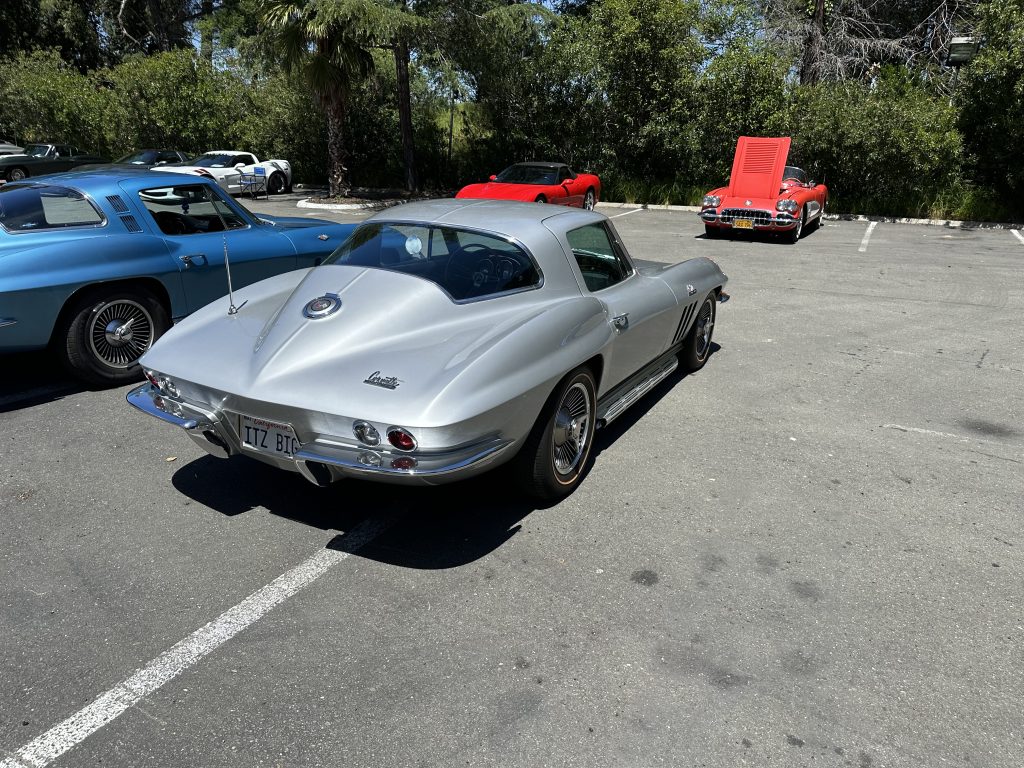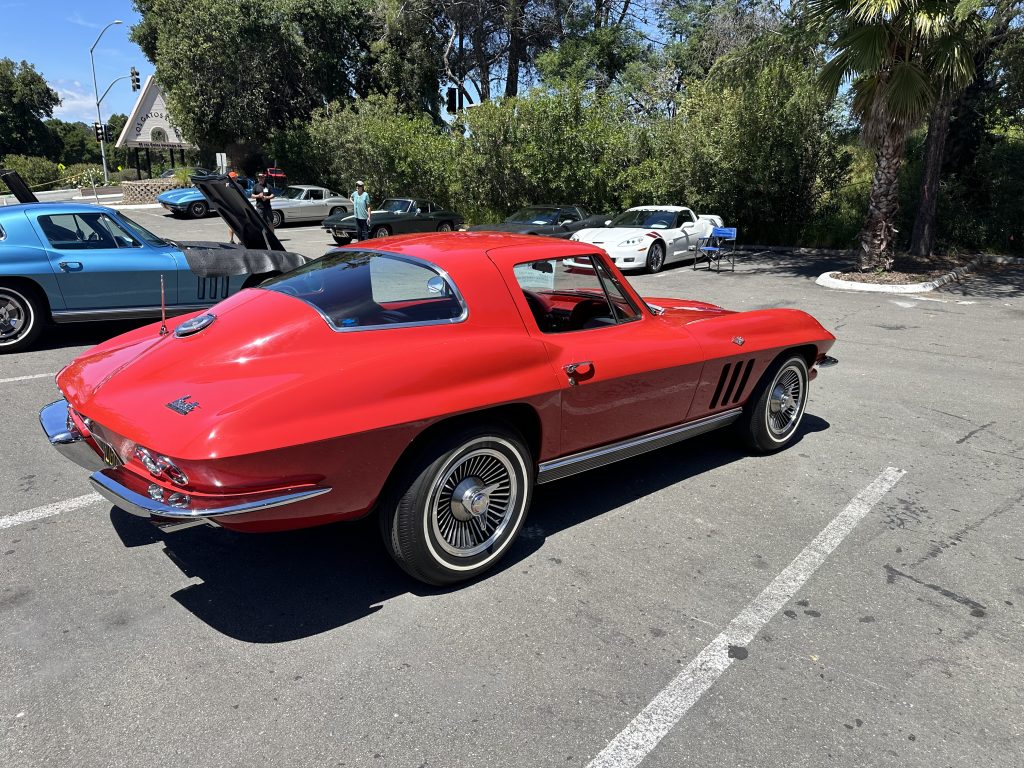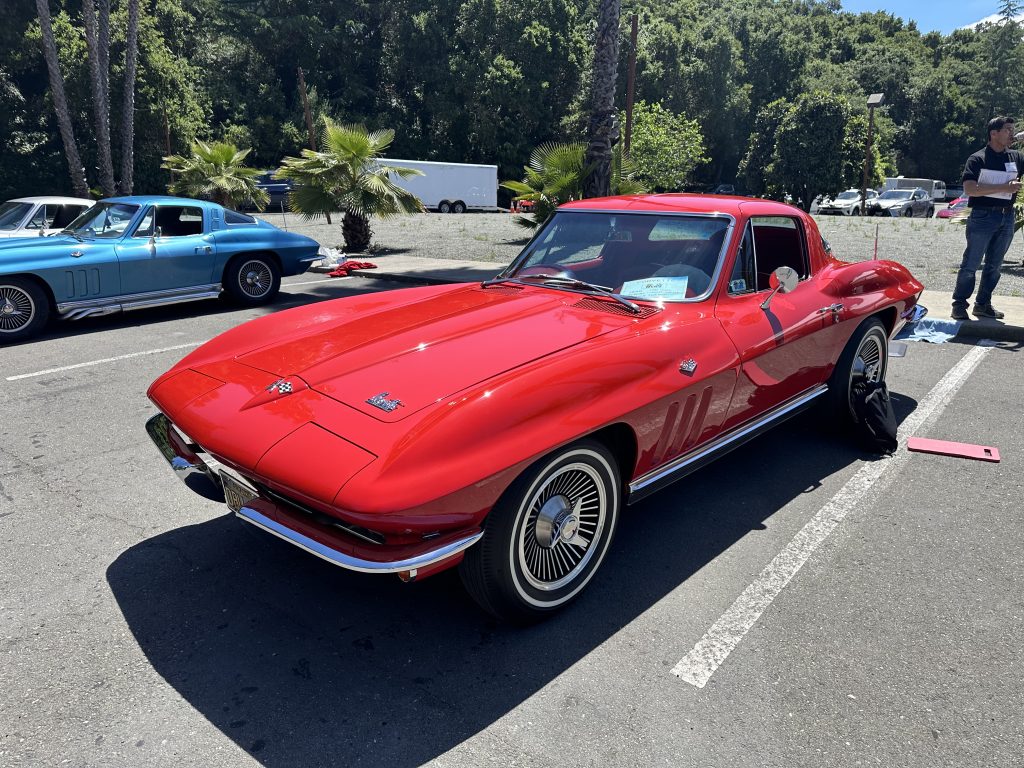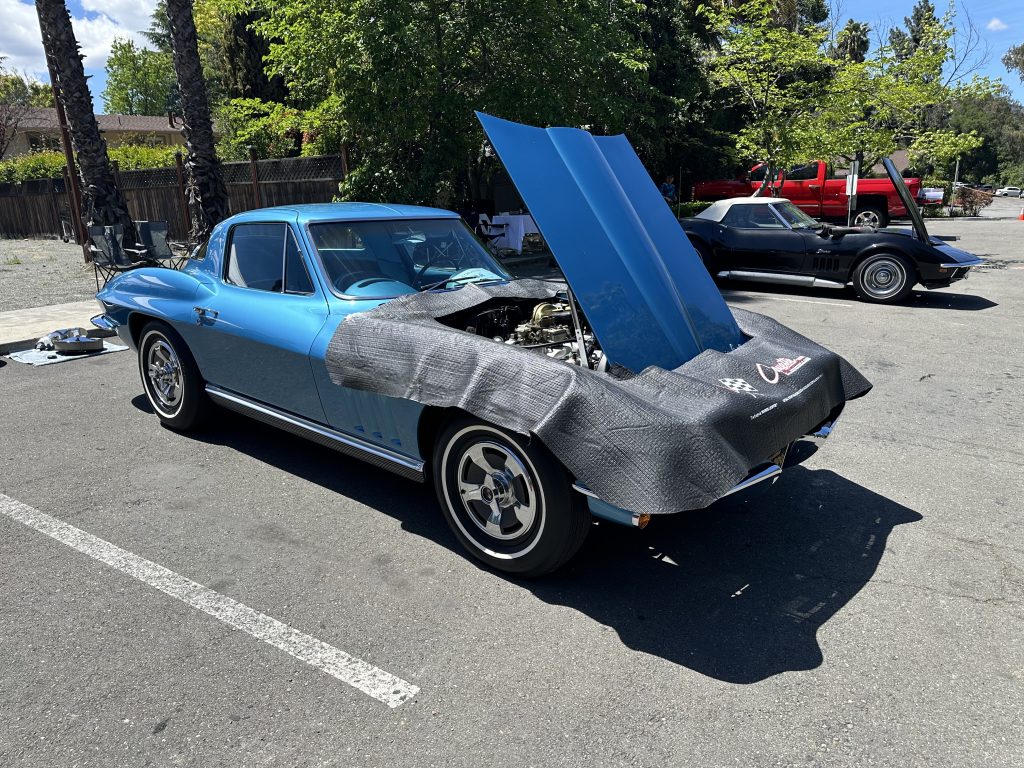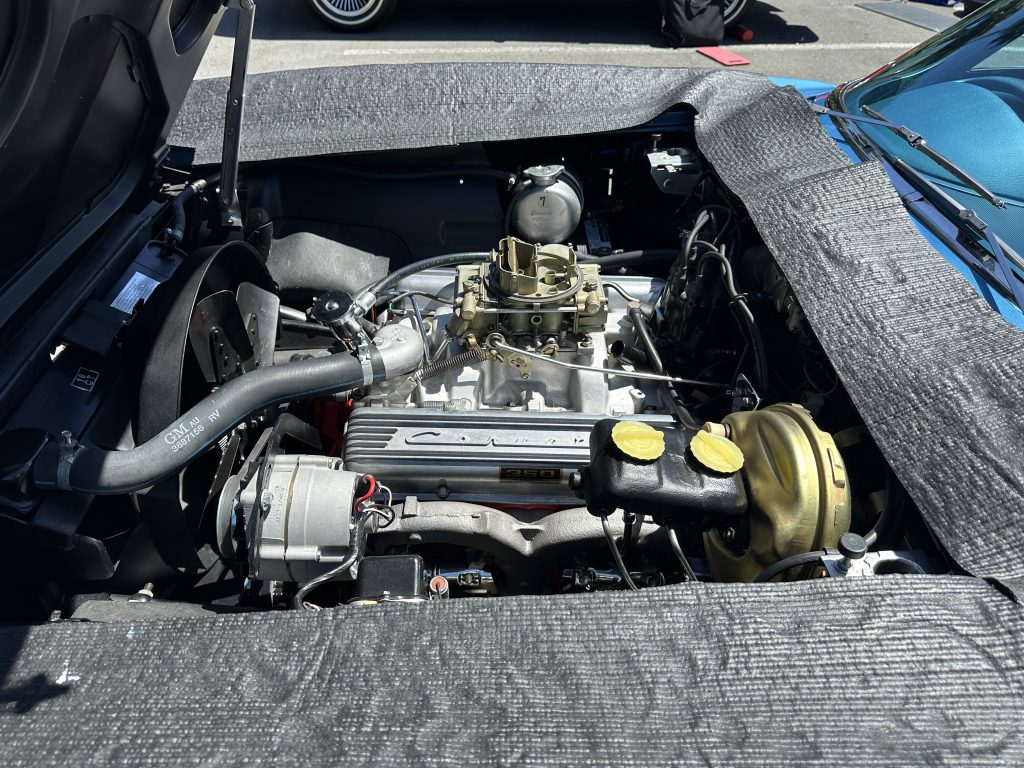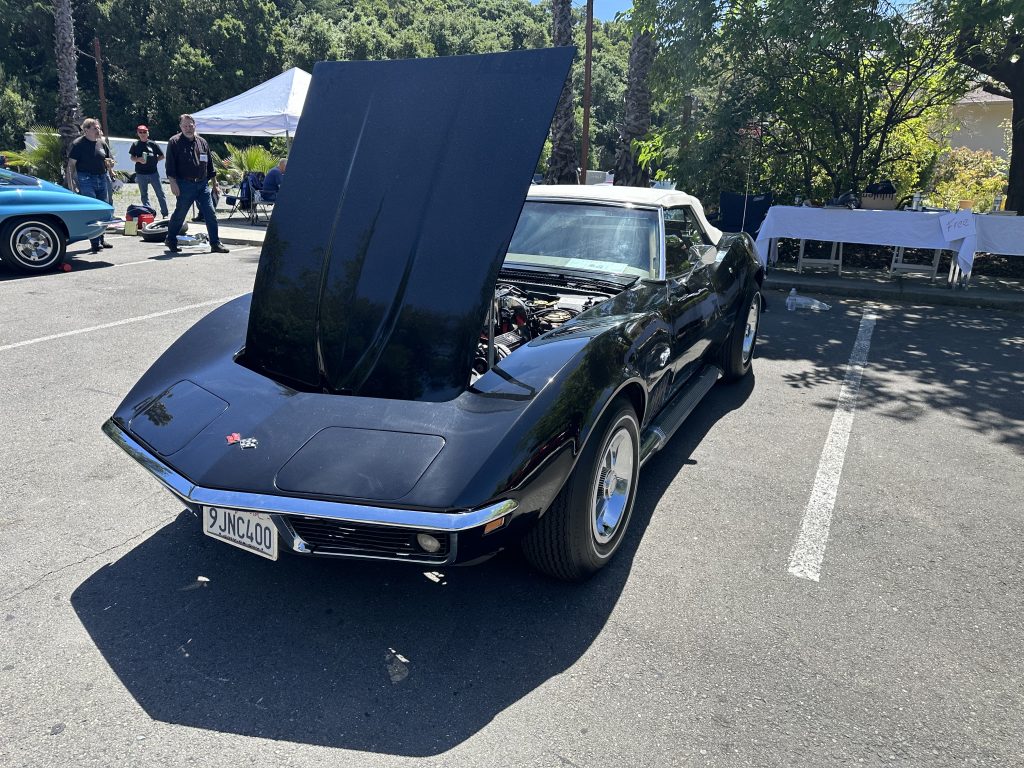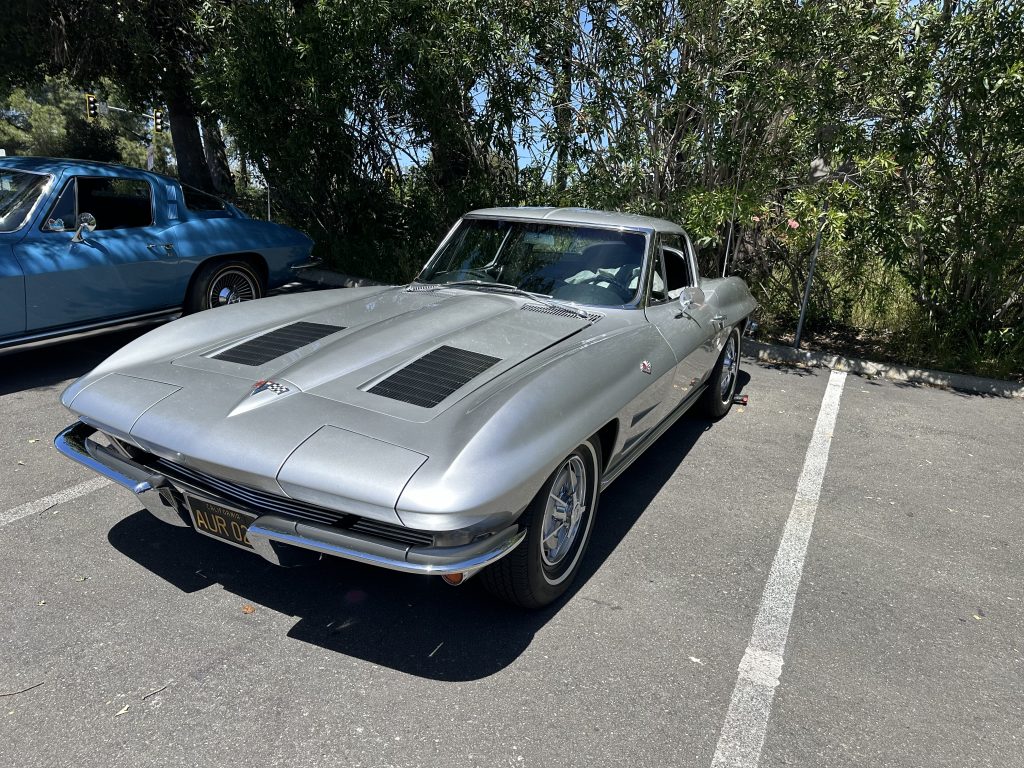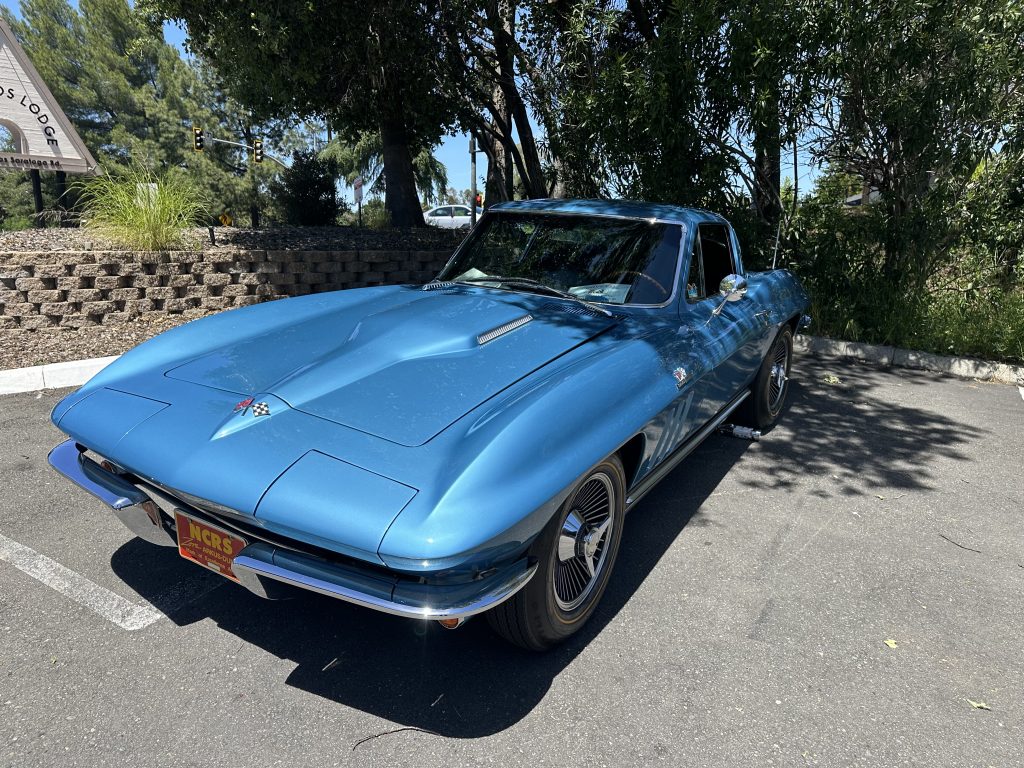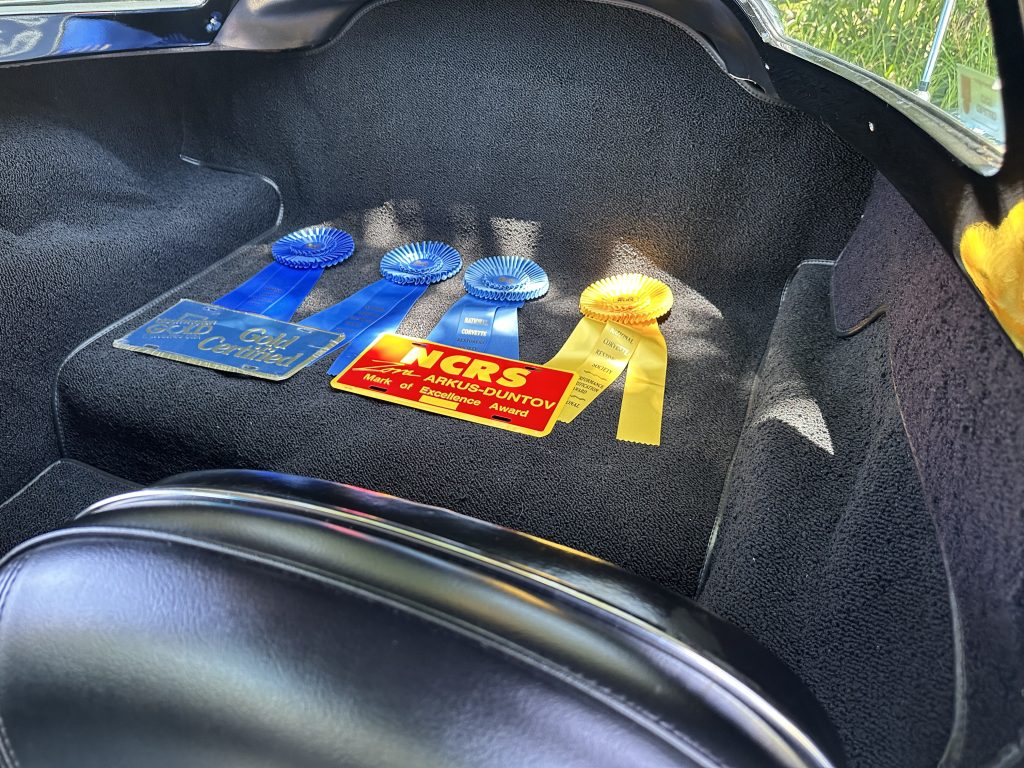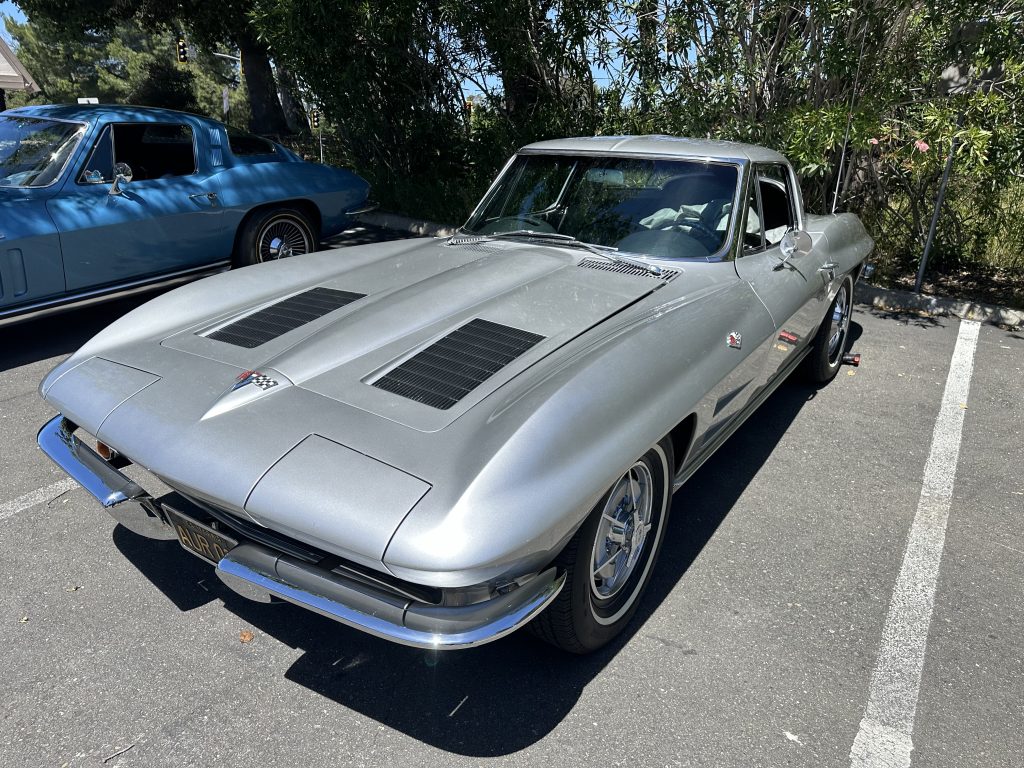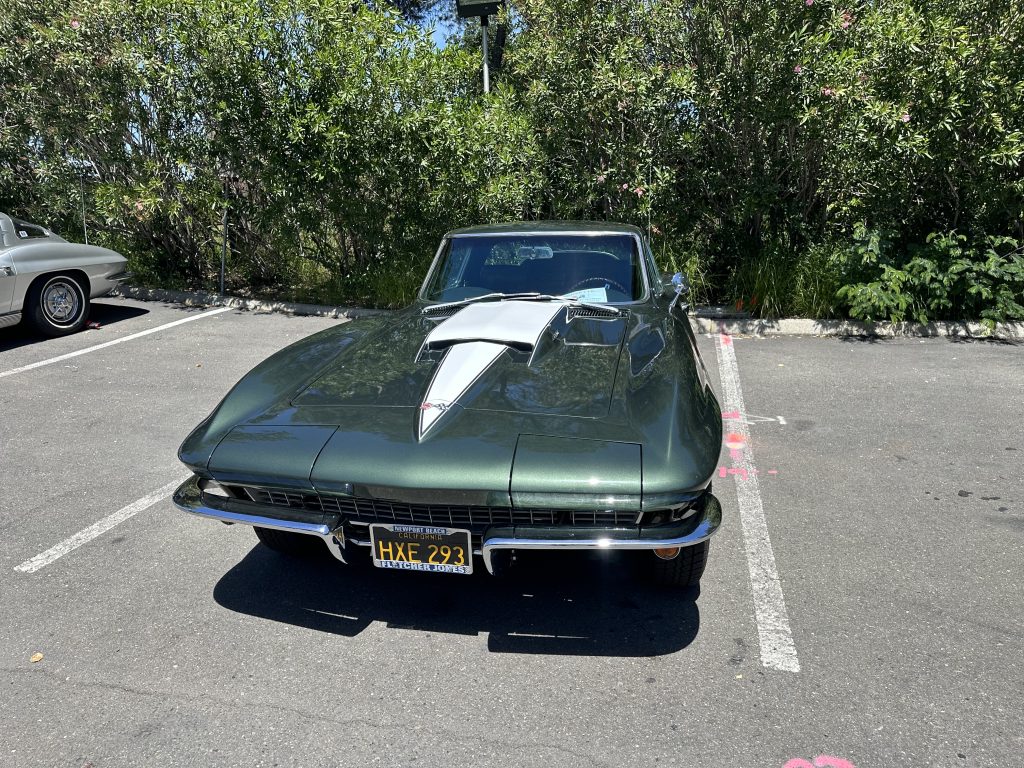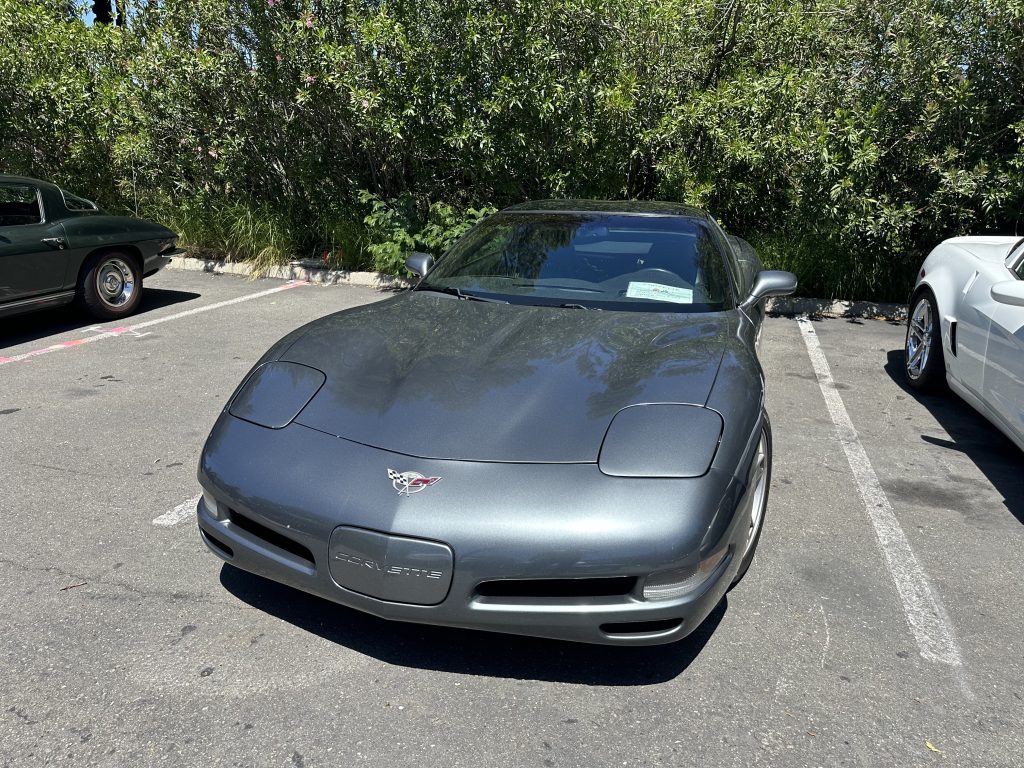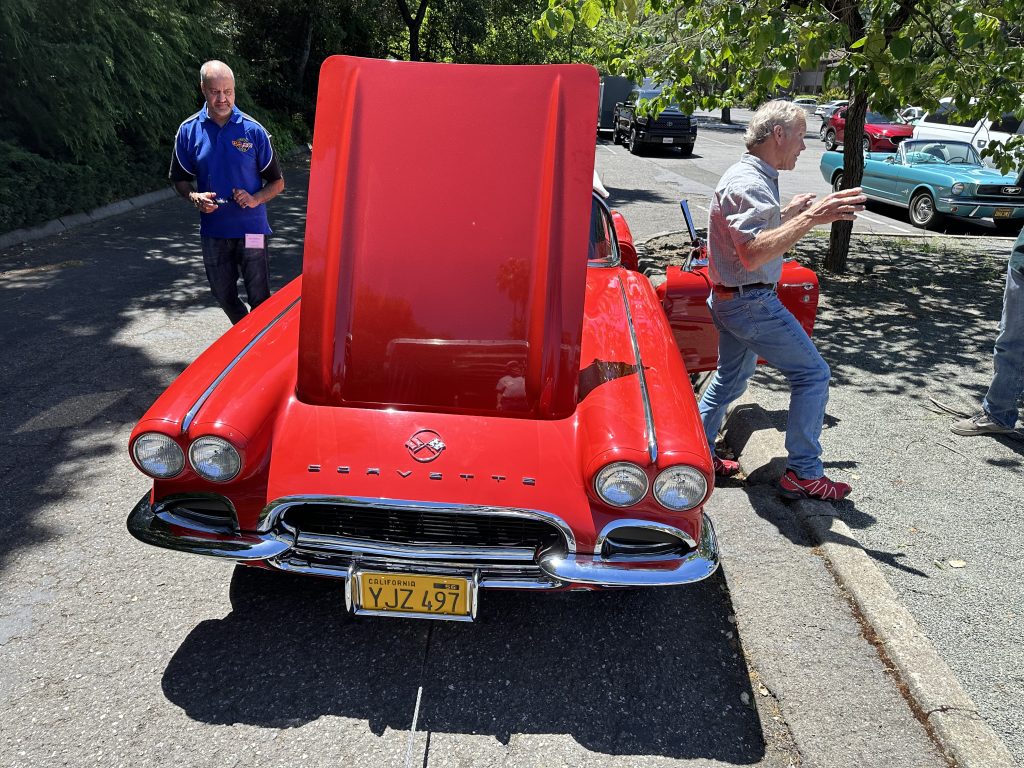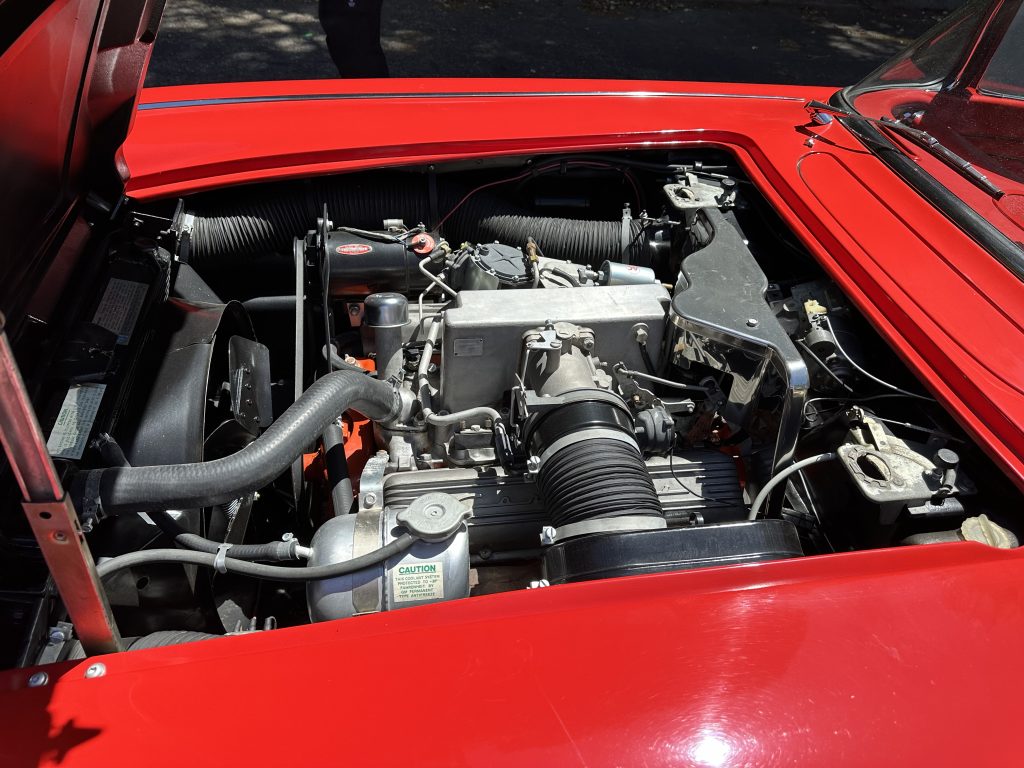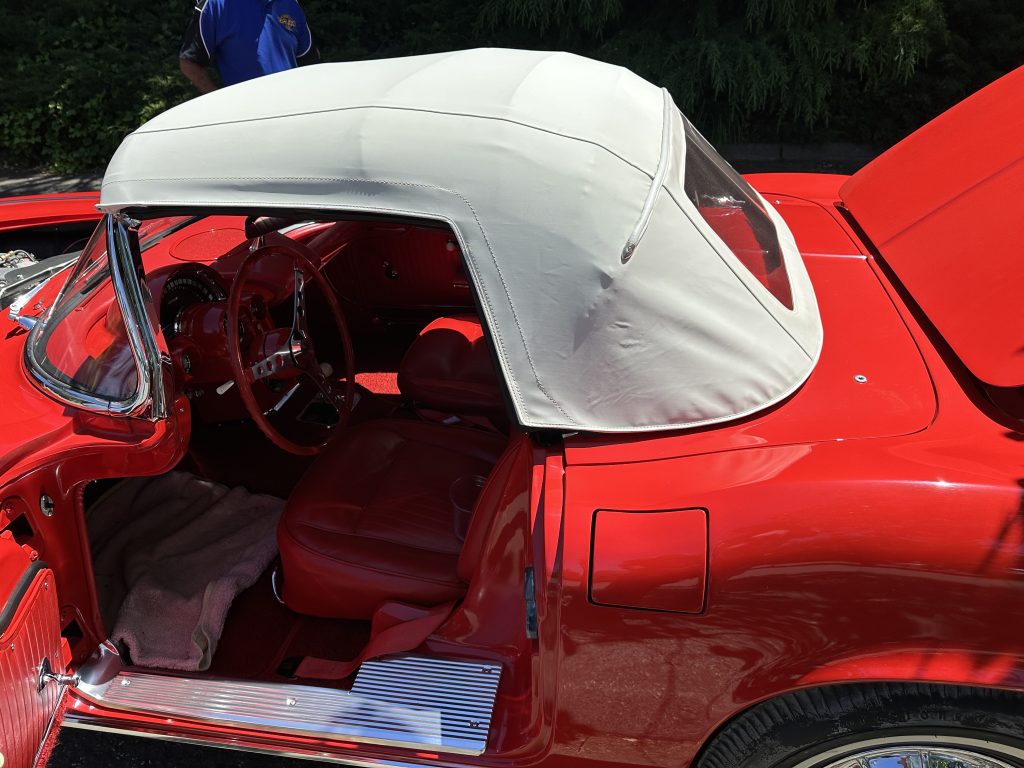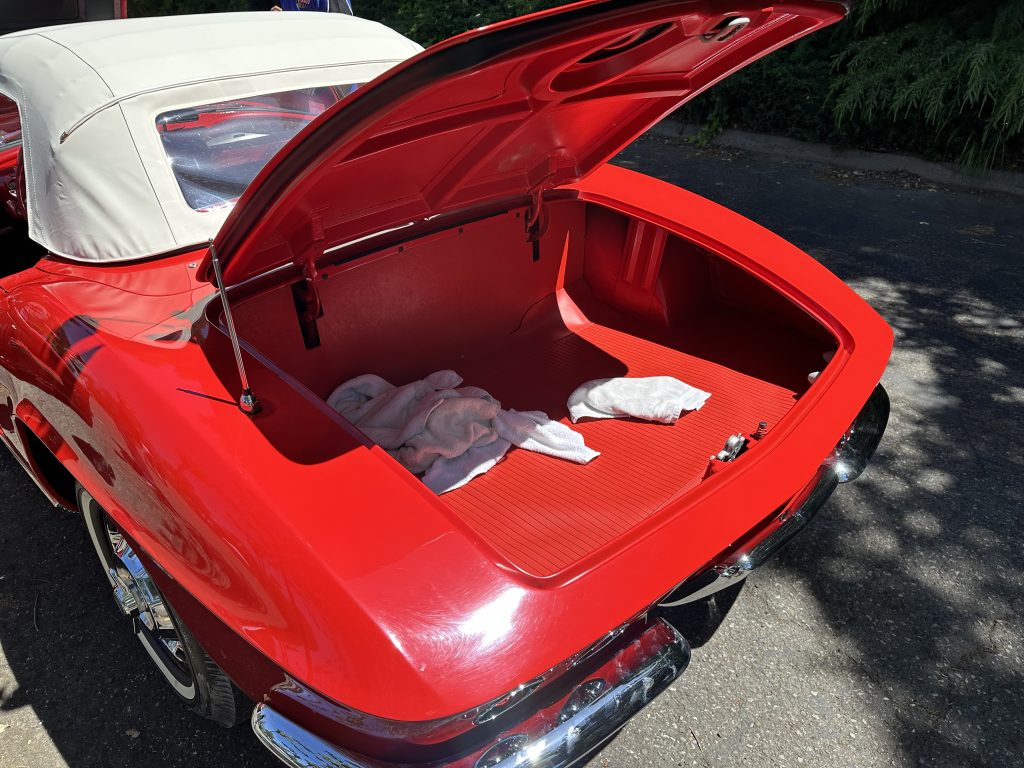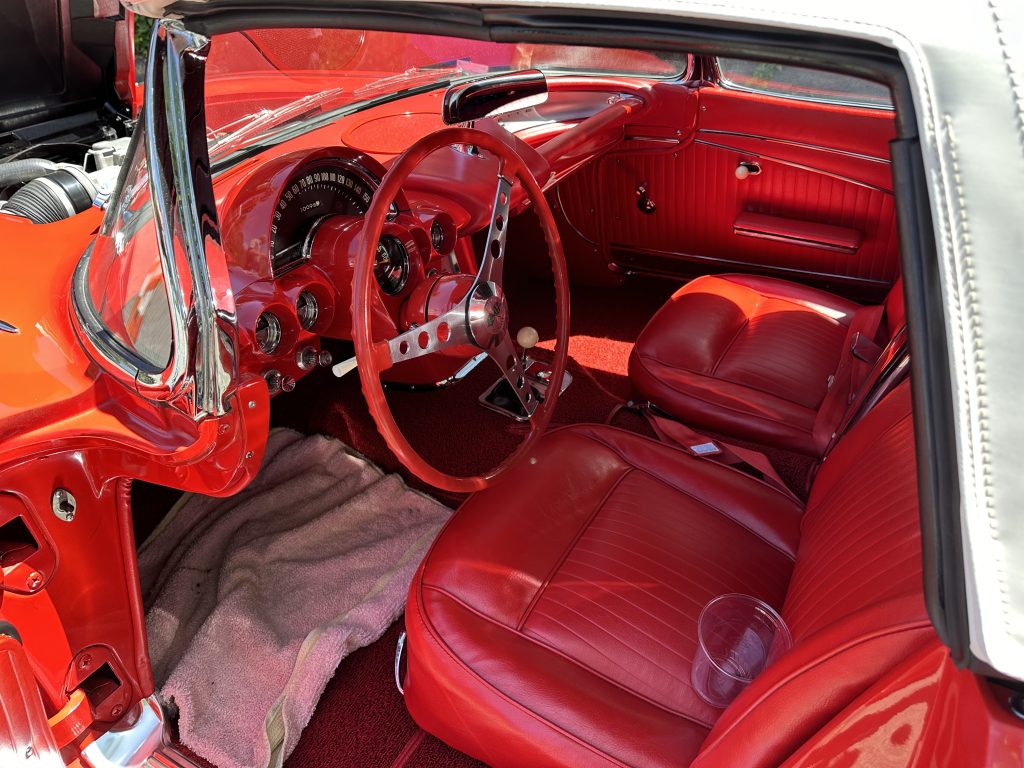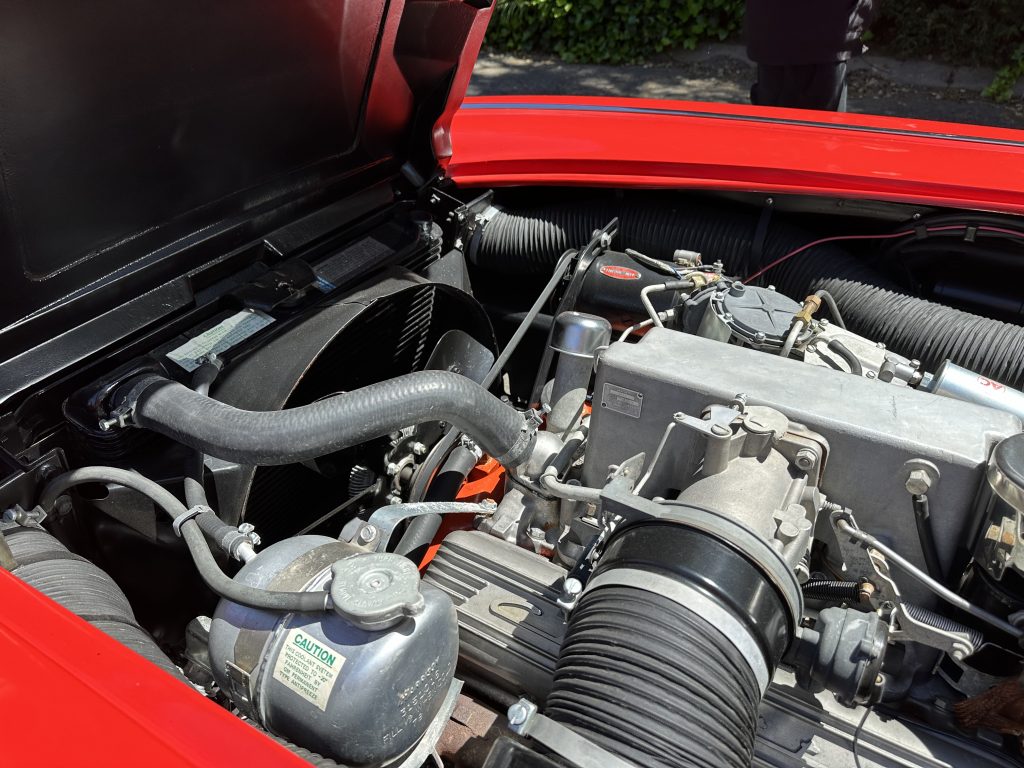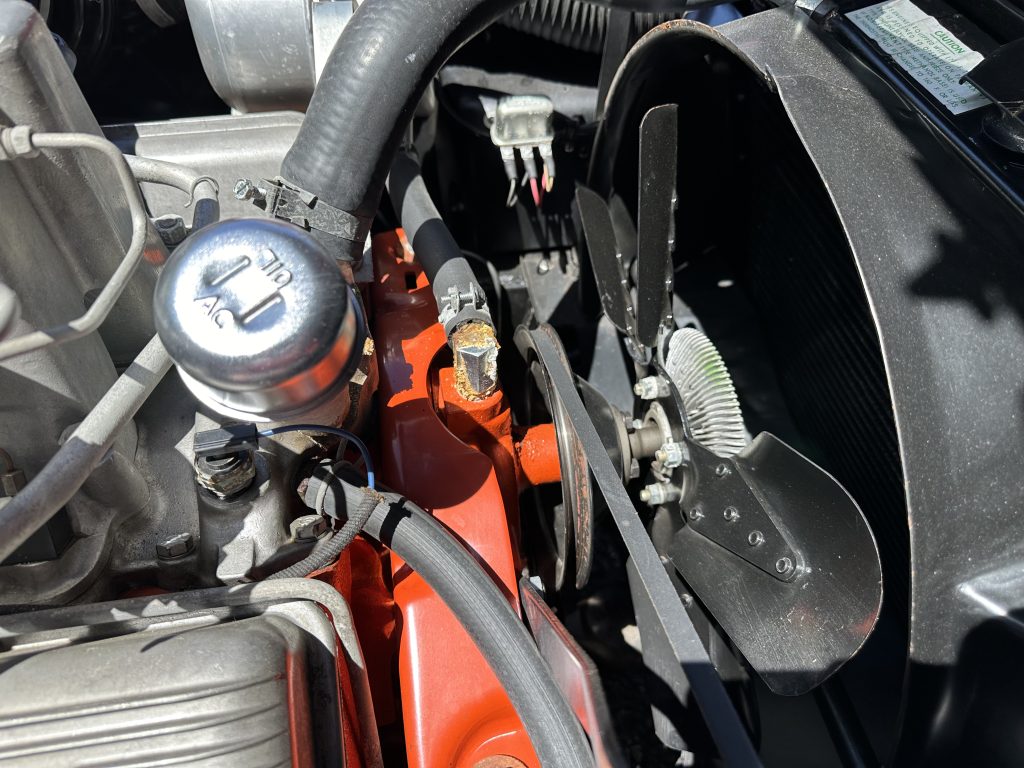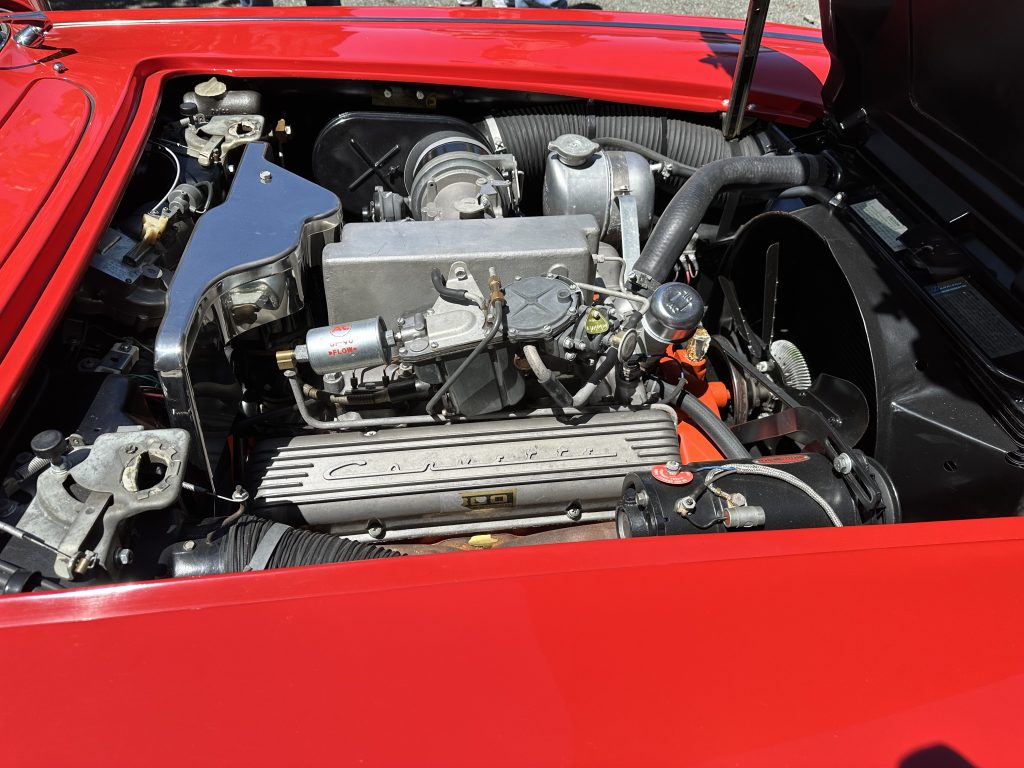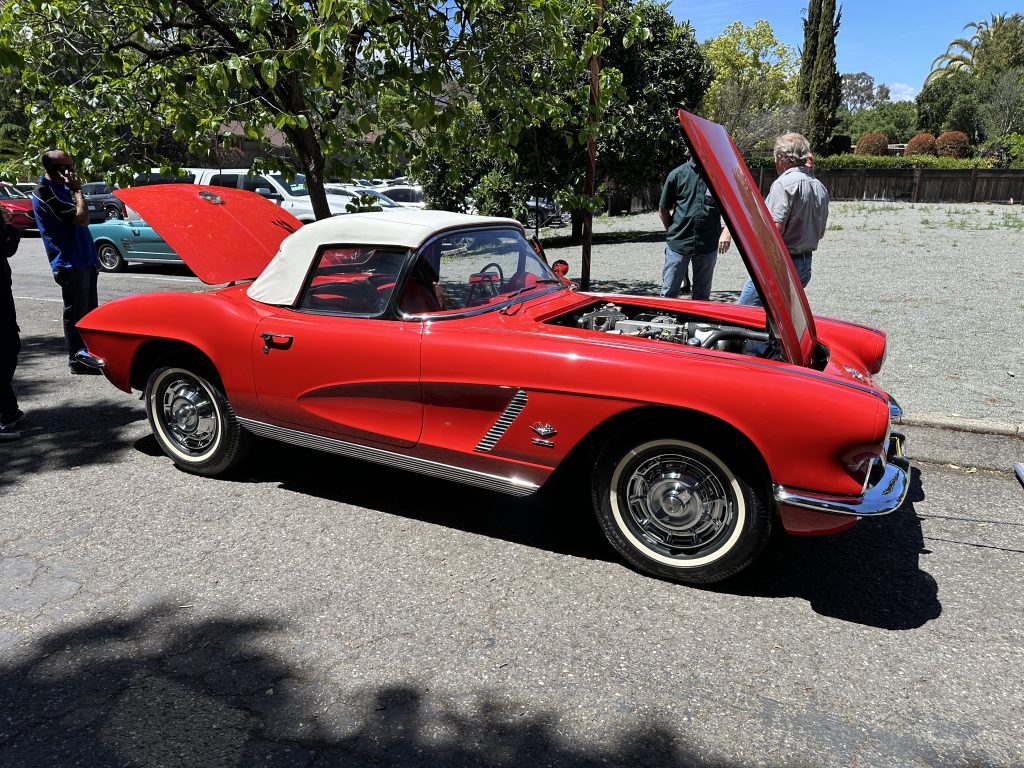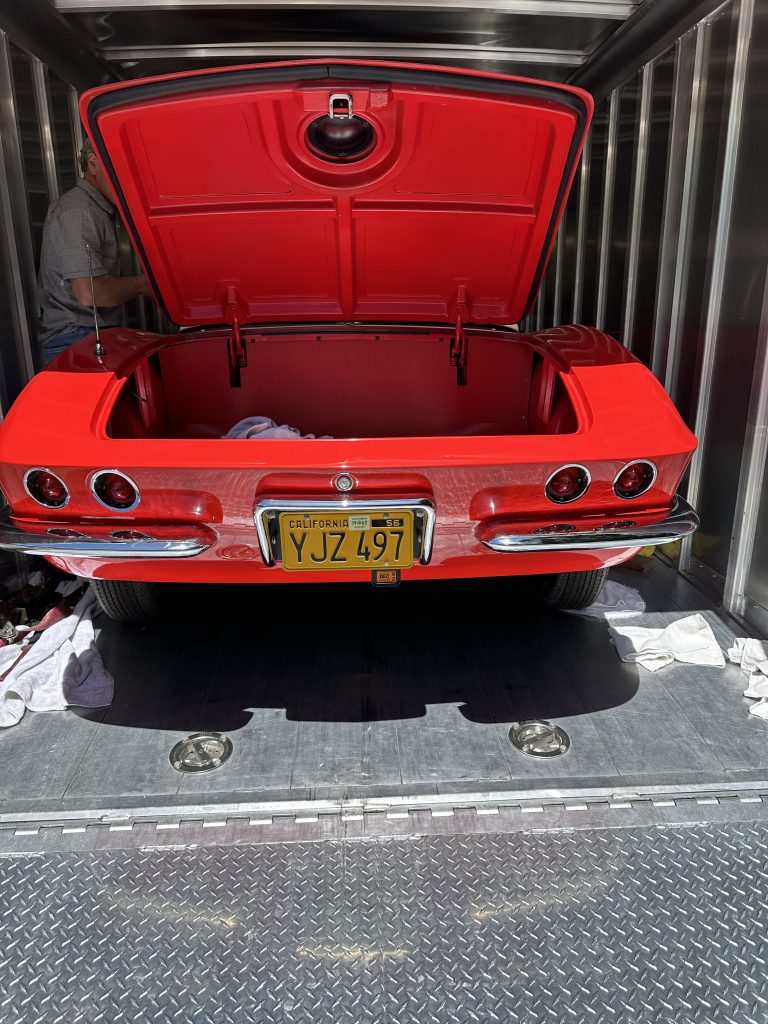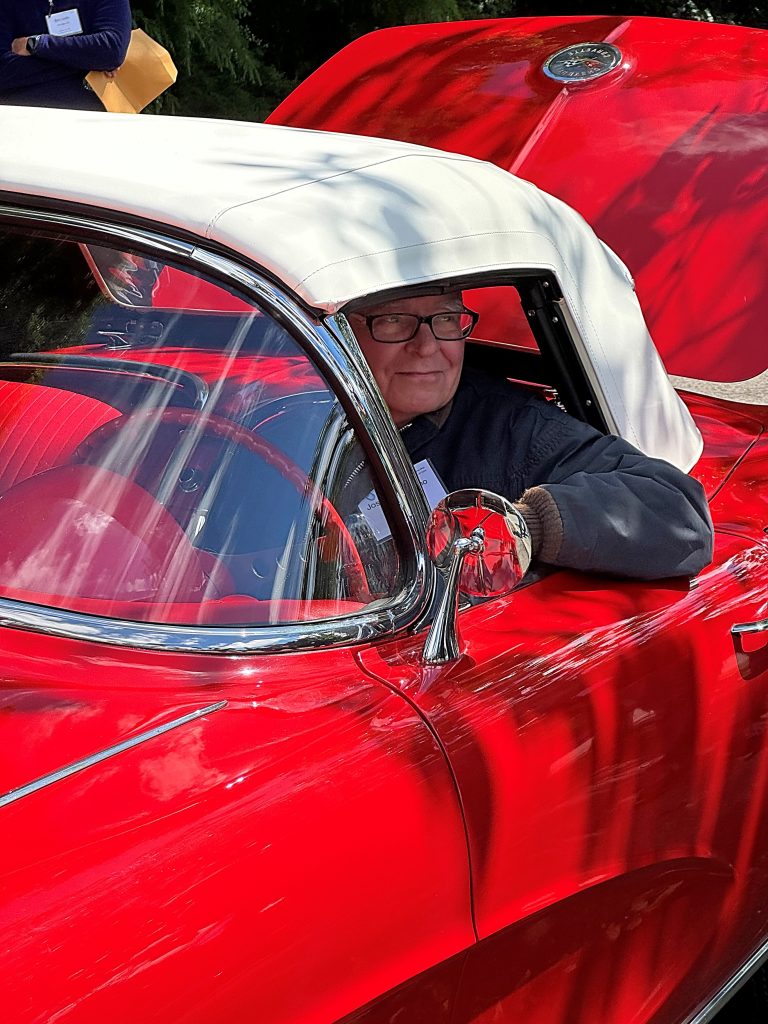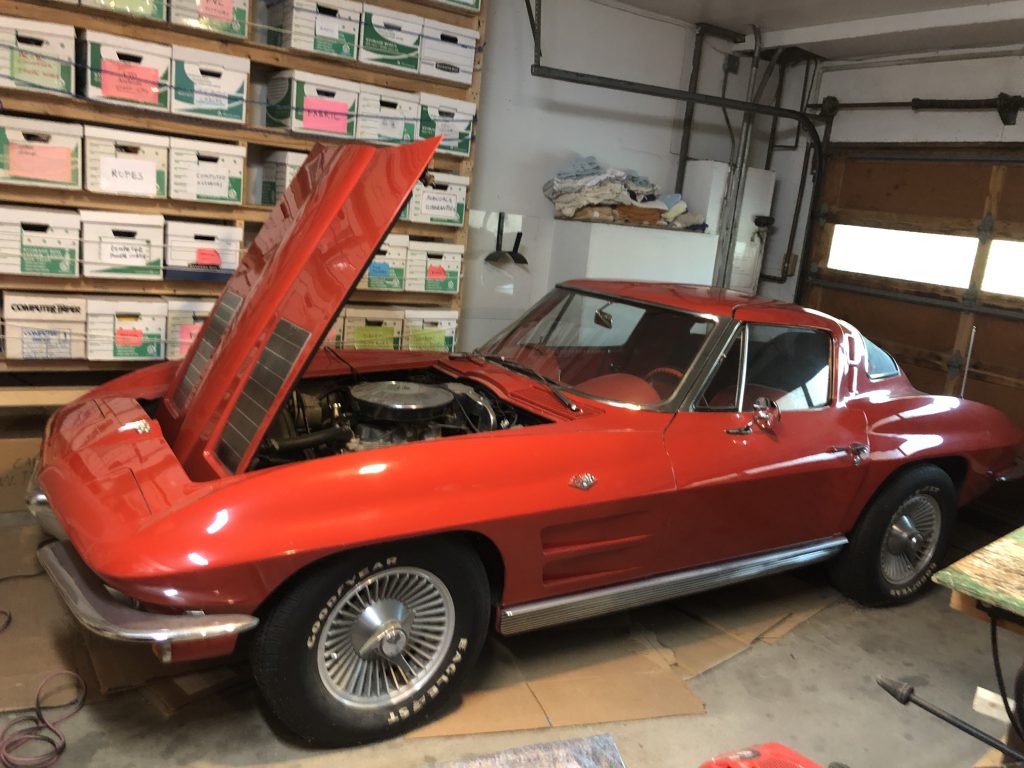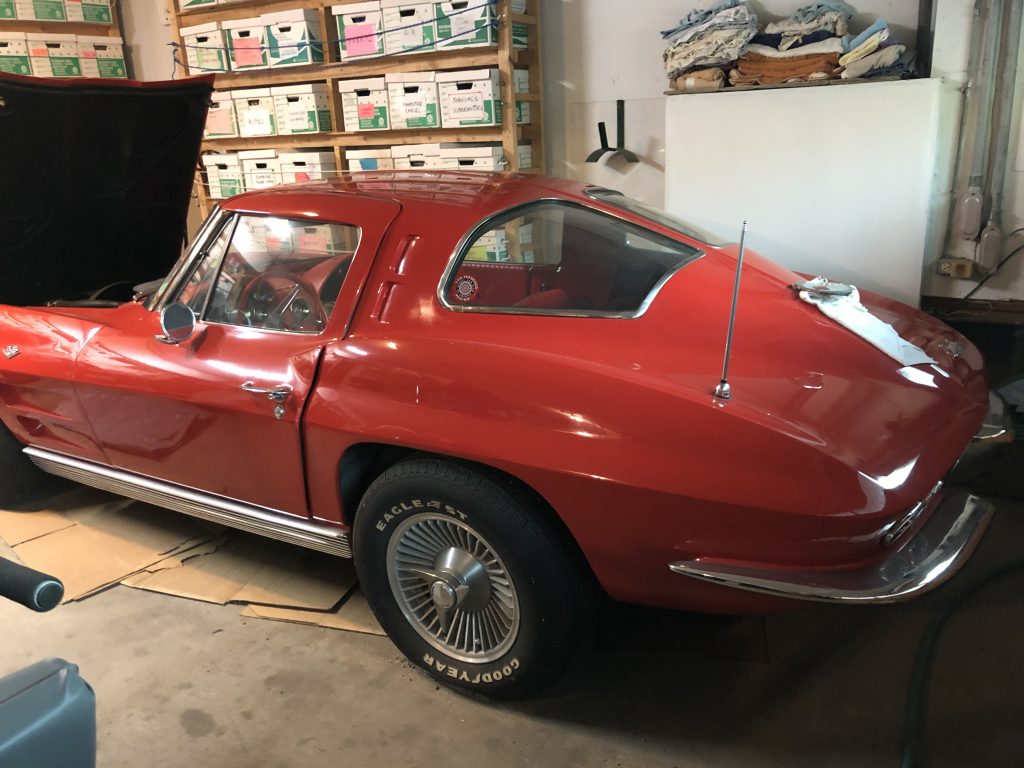By Jeff Blakeslee
One of the hallmarks of any NCRS meet is the image of several sets of feet sticking out from
under a Corvette. In fact, when I’m taking pictures, it is much easier to get a shot of a
judge’s shoes than their face. Even more disturbing is that most of us can now recognize
each other just by our shoes. It’s as if we have developed a sort of sixth sense and can
associate a fellow member with his footwear.
At an NCRS meet, it is quite common to see a member walking by a set of familiar feet and
calling out “Hi Pete, how is it going?” Then magically from under the car you may hear,
“it’s going great Don, how about you?” Often a lengthy social exchange can take place
between two members without one of them ever having to get out from under the car. Yes,
we are a unique breed, and we would not have it any other way.
As I get older, I realize I’m going to have to start warming up before a judging meet by
stretching and then crawling around the floor for 30 minutes. Better yet, maybe I’ll do this
warm up out on the street where I can experience the hot asphalt under my hands
and knees – that way I will truly be ready to judge. We judges wear this burden like a
badge of honor. Sure, we like a grassy judging field or a nicely carpeted floor, but deep down
we realize those are for wimps. What we really want is blistering hot, freezing cold, or better
yet, soaking wet pavement. That is the only way we can show our true dedication to finding
that one bolt with the wrong finish or that exhaust clamp that is clocked incorrectly.
From the sidelines, the public wonders what the heck is going on, all the time debating
whether emergency services should be called. But to us NCRS folks, this is just another day
at the office.
Don’t get me wrong, I like being under a classic Corvette as much as the next person.
But now and then I like to go to a car event where I can have coffee at a corner shop, visit
with friends, and just enjoy the day. That’s why I’m suggesting that the NCC mix in a
different kind of car show now and then. Specifically, I’m hoping that all of you will join
us at the Novato Nostalgia Days this year. This is a fantastic car show in Downtown
Novato. Classic cars will be parked up and down the street making for a friendly and
casual setting. There are a lot of shops and vendor booths to keep you fed, and you will be
entertained with live music. I have attended this on my own several times, and this year
I’m hoping that we get enough members interested to have a nice showing of what
properly restored Corvettes look like. If we get 15 or more members, they will reserve a space
for us so we can all park together, and we will be allowed to set up an informational booth for
NCRS.
If you would like to join us for this event, the date is October 11th and 12th and you can sign
up at the website link below. When you register, please be sure to put NCRS in the
“Club Affiliation” section of the registration. If we get enough interest, we may also organize
a road tour to the event. I hope to see you there.
Nostalgia Days Novato – Annual Car Show
See the June Newsletter here: https://www.ncc.ncrs.org/newsletters/

